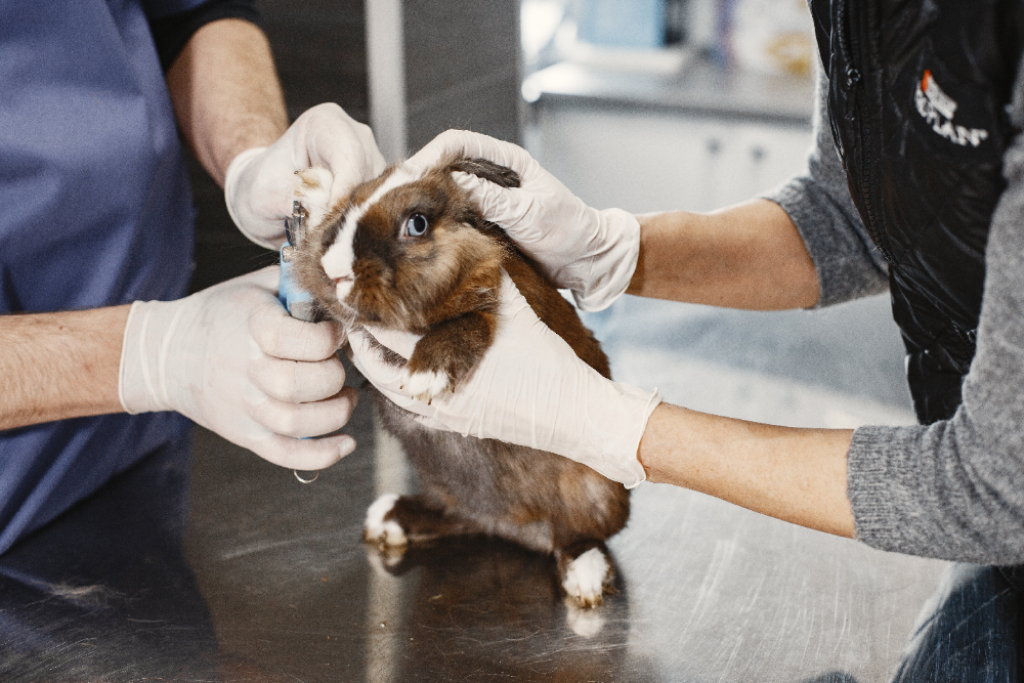A cataract is the clouding of the lens in your pet’s eye that prevents the passage of light through their eye, restricting vision. Our guide to cataracts will give you everything you need to know about cataracts in cats, dogs, and rabbits, and possible treatments with Knutsford Vets Surgery.
What are cataracts?
A cataract is the opacification, or cloudiness, of the lens (the transparent structure within the eye that is responsible for focusing light onto the retina). Clouding of the lens prevents the passage of light through the eye, affecting your pet’s vision and may eventually cause blindness.
Cataracts greatly vary in appearance, and are often categorised by age of onset, stage of development, its position within the lens, and its relation to underlying health factors.
The condition will usually worsen over time if left untreated.
What causes cataracts?
Cataracts are often hereditary, with over 100 different dog breeds known to be predisposed to the condition. Cats can also be predisposed to cataracts, and rabbits are often born with them. There are also a number of other ocular conditions that can cause cataracts to form, known as secondary cataracts. These include:
- Old age
- Diabetes
- Other ocular conditions such as uveitis
- Trauma
- Bacterial infection
- Generalised progressive retinal atrophy (PRA)
What are the symptoms of cataracts?
Symptoms of cataracts vary from case to case, and will depend on the severity of the case, however, most pets with cataracts will present with one or more of the following symptoms:
Cloudiness of the lens in one or both eyes
With mild cases, or cases of cataracts still in their early stages, cloudiness of the lens may be difficult to notice, however it is more prominent when light strikes their eye in a particular way.
Loss of vision
Loss of vision may be harder to detect as it often develops slowly, and many pets are good at adapting to using their other senses. Early signs are often more noticeable in unfamiliar environments. In more severe cases, however, you may notice that your pet struggles to see well enough to get around the home, or struggles to move around in darkness.
Pain
Cataracts tend not to be painful, however if your pet has developed the condition as a result of another ocular condition, there may be a degree of pain, irritation or discomfort associated with the primary condition. In these cases, the underlying condition will be treated to reduce pain and discomfort, and to reduce further progression of the cataracts.
Discharge
You may notice discharge coming from the affected eye(s). Discharge is often a sign of ocular health issues in pets, therefore it is important to have any cases of ocular discharge checked out by your veterinarian.
How we diagnose cataracts
- Distant direct ophthalmoscopy – a light is shone into the eye and cataracts appear as a dark area in the light that bounces off the back of the retina
- Slit-lamp biomicroscopy – shines a thin slit of light through the eye. Light bounces off and highlights a cataract sitting in the eye. This allows an understanding of where in the lens the cataract is sitting.
- High-definition ultrasound scanning allows us to look within and beyond a cataract to understand other diseases that may be related to a cataract.
How are cataracts treated?
As with human cataracts, there are currently no eye drops or medications proven to treat cataracts in pets. The only way to remove cataracts and potentially restore vision is with phacoemulsification surgery. However, not all cases will require surgery, and it may be possible to prevent rapid progression by treating the underlying cause, although this depends on the severity of the case.
Phacoemulsification is best carried out by a Diplomate Specialist Ophthalmologist so Knutsford Vets Surgery currently do not offer cataract surgery. However various treatment options will be presented to you after diagnosis and if cataract surgery is necessary, we can refer you to an external veterinary surgeon that can perform the treatment.
Cataract surgery is performed under general anaesthesia with a muscle relaxant also given to ensure that the eye is in the correct position for the operation. A special operating microscope and surgical instruments are used to remove the cataract using a technique called phacoemulsification. In some cases, an artificial lens will be placed where the old lens was.
Intensive aftercare is required post-surgery with several types of eye drops needing to be applied up to six times a day. Most pets will have a level of vision restored the day after surgery, however it usually takes a few weeks for the eye to adjust and vision to settle.
Knutsford Vets Surgery
By choosing Knutsford Vets Surgery, your pet will be in the safe hands of experienced Ophthalmologist, Dr Paul Adams. Dr Adams has years of experience treating a wide range of ocular conditions, and is the perfect partner to look after your pet’s ocular health.
We welcome new patients, second opinions and referrals.
Our friendly team is on hand if you have any questions. Contact us on 01565 337999.





